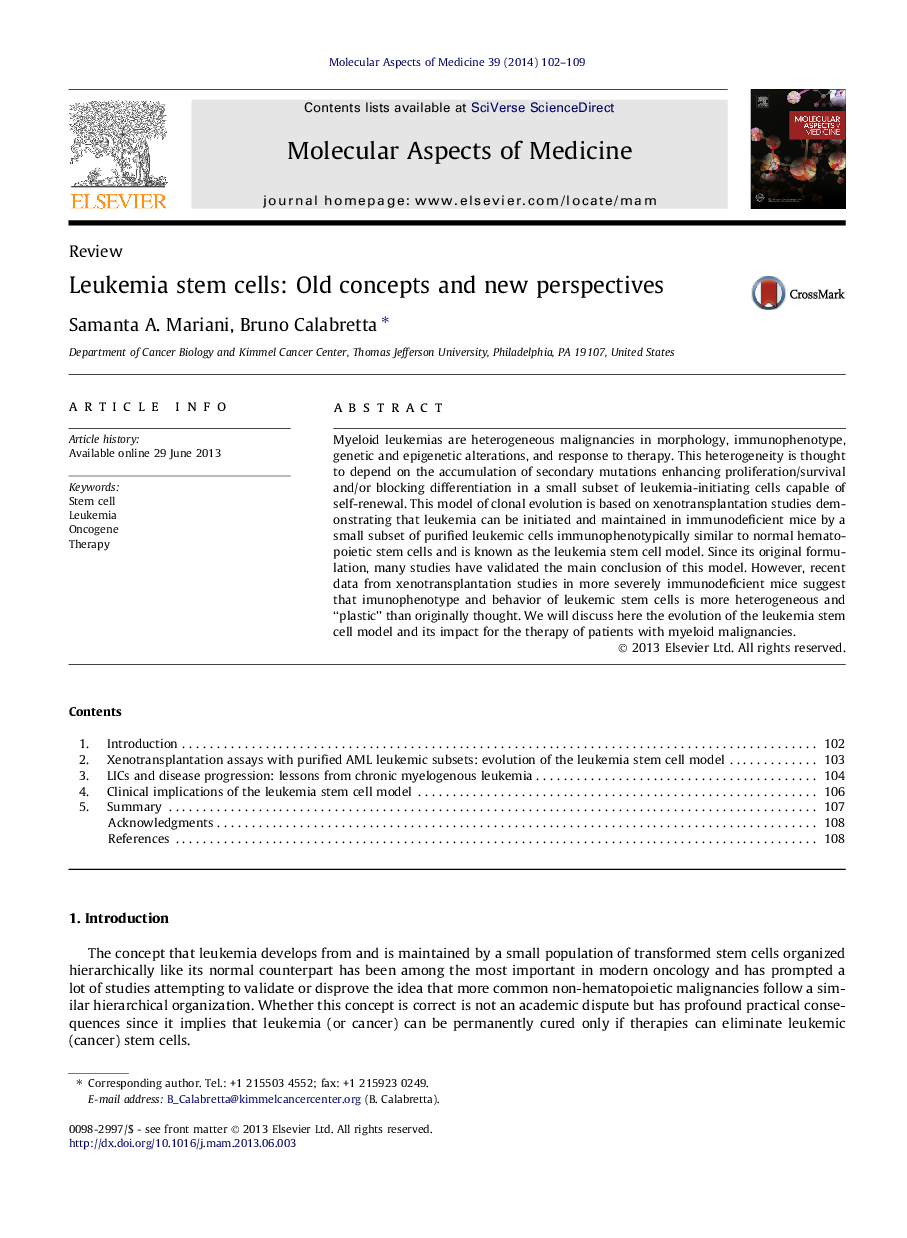| Article ID | Journal | Published Year | Pages | File Type |
|---|---|---|---|---|
| 1995630 | Molecular Aspects of Medicine | 2014 | 8 Pages |
Abstract
Myeloid leukemias are heterogeneous malignancies in morphology, immunophenotype, genetic and epigenetic alterations, and response to therapy. This heterogeneity is thought to depend on the accumulation of secondary mutations enhancing proliferation/survival and/or blocking differentiation in a small subset of leukemia-initiating cells capable of self-renewal. This model of clonal evolution is based on xenotransplantation studies demonstrating that leukemia can be initiated and maintained in immunodeficient mice by a small subset of purified leukemic cells immunophenotypically similar to normal hematopoietic stem cells and is known as the leukemia stem cell model. Since its original formulation, many studies have validated the main conclusion of this model. However, recent data from xenotransplantation studies in more severely immunodeficient mice suggest that imunophenotype and behavior of leukemic stem cells is more heterogeneous and “plastic” than originally thought. We will discuss here the evolution of the leukemia stem cell model and its impact for the therapy of patients with myeloid malignancies.
Related Topics
Life Sciences
Biochemistry, Genetics and Molecular Biology
Biochemistry
Authors
Samanta A. Mariani, Bruno Calabretta,
